Siblings Silvio Frondizi Name Arturo Frondizi | Nationality Argentine | |
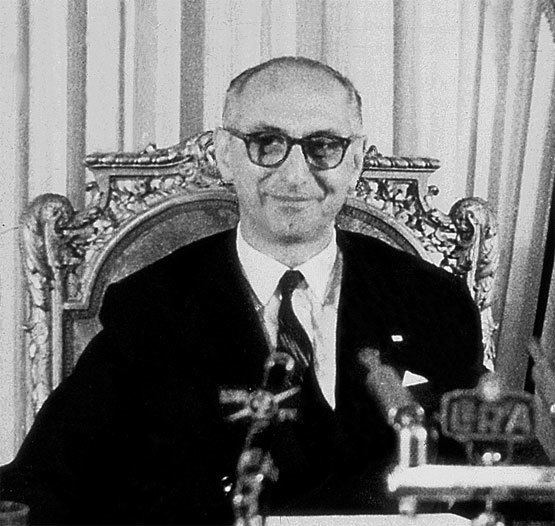 | ||
Vice President Alejandro Gomez (1958)None (1958–1962) Full Name Arturo Frondizi Ercoli Political party Radical Civic Union(1932–1956)Intransigent Radical Civic Union(1956–1963)Integration and Development Movement(1963–1986) Died April 18, 1995, Buenos Aires, Argentina Presidential term May 1, 1958 – March 29, 1962 Spouse Elena Faggionato (m. 1933) Similar People Arturo Umberto Illia, Rogelio Julio Frigerio, Juan Carlos Ongania, Pedro Eugenio Aramburu, Juan Peron | ||
Ticker tape parade in new york city for argentine president arturo frondizi 1959 newsreel
Arturo Frondizi Ercoli, GCMG (October 28, 1908 – April 18, 1995) was an Argentine politician and lawyer who acted as the President of Argentina between May 1, 1958, and March 29, 1962, for the Intransigent Radical Civic Union, which he led until 1986.
Contents
- Ticker tape parade in new york city for argentine president arturo frondizi 1959 newsreel
- Argentine president arturo frondizi votes in ballot box during elections argenti hd stock footage
- Early life and education
- Political office
- Presidency
- Developmentalist Economic Plan
- Petroleum
- Infrastructure
- Introduction
- The government and its relationship with labor
- Educational Reforms
- Conclusion
- Foreign policy
- Overthrow
- Later life
- Personal life
- References
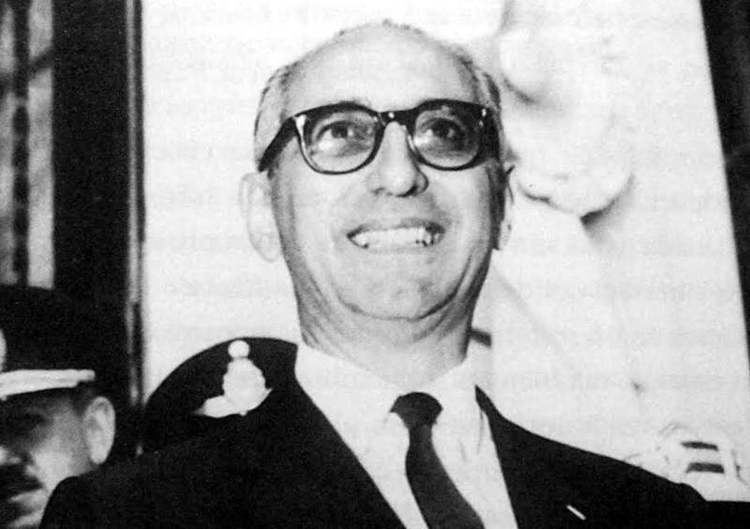
Under his program of "Developmentalism", he encouraged increased foreign investment in heavy industry, including motor vehicle production; made the country self-sufficient in oil production, and increased public spending for loans to encourage business, and to develop infrastructure for electrical power.
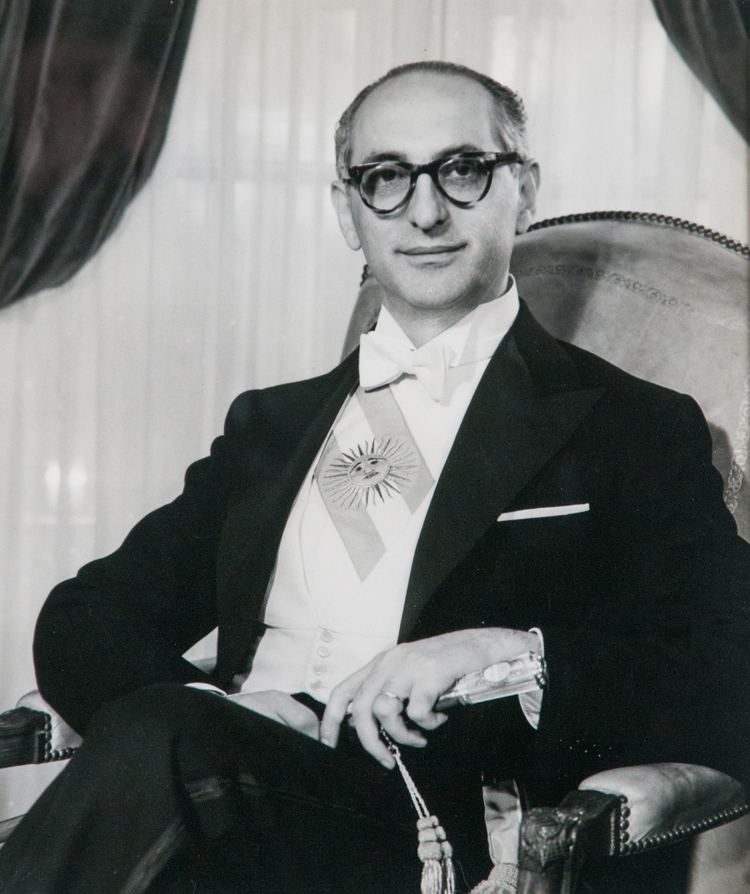
He was a law professor who became active in left-wing politics as a young man, joining the Radical Civic Union (UCR). He was first elected to the Argentine Chamber of Deputies in 1946. In the 1950s he founded the Intransigent Radical Civic Union. He was elected following the military coup d'etat that overthrew Juan Perón, and was deposed in turn by a coup in 1962.

Argentine president arturo frondizi votes in ballot box during elections argenti hd stock footage
Early life and education

Frondizi was born in Paso de los Libres, Corrientes Province; to Isabel (née Ercoli) and Giulio Frondizi, Italian immigrants from the Umbria Region. Arturo was one of 11 sons; his brothers included: Silvio, who became a professor of law at the University of Buenos Aires (UBA) and was assassinated in 1974 by the Triple A, and Risieri, who became a philosopher and rector of the University of Buenos Aires. The family relocated to Concepción del Uruguay in 1912, and in 1923 to Buenos Aires. Frondizi enrolled in the UBA in 1926.
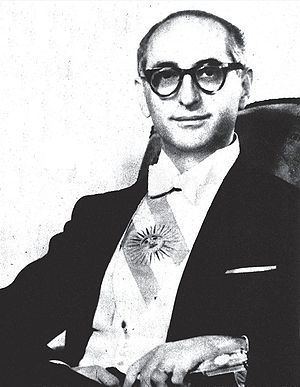
Frondizi graduated from the UBA Law School with honors in 1930. He entered politics following the coup against President Hipólito Yrigoyen, the longtime leader of the centrist UCR, and the first Argentine President elected via universal (male) suffrage. Arrested in 1931, after jail he became an editor of a number of UCR-leaning journals, and formally joined the party the following year. He earned a juris doctor in 1932. In July of that year, he was among those who spoke in eulogy at Yrigoyen's funeral march. His first case as an attorney was representing 300 political prisoners detained in his native Paso de los Libres for their support of the banned UCR.
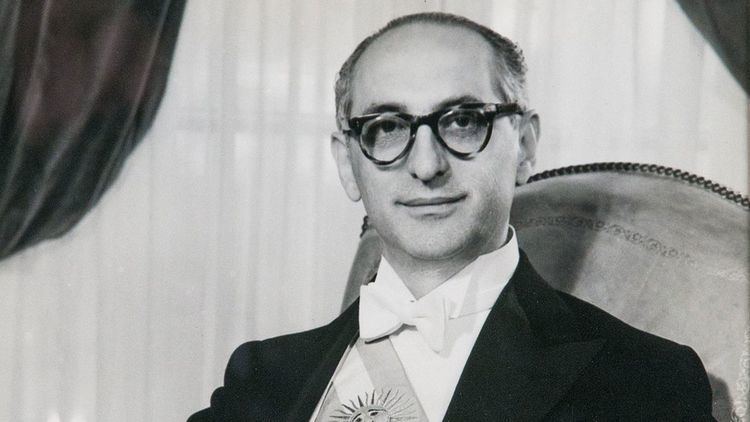
Frondizi married the former Elena Luisa María Faggionato in 1933. They built a summer cottage in 1935 at the then-secluded seaside resort town of Pinamar. After the birth in 1937 of their daughter, Elena (their only child), the Frondizis named the cottage Elenita.

He led the Argentine League for the Rights of Man, the nation's first recorded human rights organization, upon its founding in 1936. In December of that year, he narrowly escaped an assassination attempt while addressing a crowd.
Political office
Frondizi drafted a progressive platform alternative (the 1945 Declaration of Avellaneda) for the UCR before the February 1946 elections. He was elected to the Argentine Chamber of Deputies in 1946. He founded the Intransigence and Renewal Movement (MIR) faction of the UCR, and stood for Vice President on Ricardo Balbín's UCR ticket for the 1951 elections. They lost overwhelmingly to the incumbent, President Juan Perón.
Parting ways with Balbin, Frondizi formed an "intransigent" wing of the UCR. The UCRI separated from the more conservative and anti-Peronist Ricardo Balbín at the UCR's 1956 convention. At the time, Peronists included a left-wing element.
Peron's government was overturned by a military coup d'état in September 1955, and he went into exile in Paraguay. Before the next election, Frondizi's closest collaborator, businessman Rogelio Frigerio, obtained the exiled Perón's endorsement. With support from proscripted Justicialist Party voters, the UCRI won the February 1958 elections. (Outgoing President Pedro Aramburu banned the Peronist Party.)
Presidency
As president, Frondizi struggled with conservative and military interference over much domestic and international policy. Because of economic problems in the country and a steep rise in consumer prices, the military forced him to impose harsh austerity measures in 1959, which resulted in civil unrest.
Better able to maneuver after the 1959 recession, Frondizi began to see results from his economic policies (known as desarrollismo — "developmentalism"); by 1961, he earned the support of much of the country's large middle class. He tried to lift the electoral ban on Peronism. In addition, he met with Che Guevara and Fidel Castro to aid in mediating their dispute with the United States. This led the military to withdraw their support from his administration, as it opposed leftist populist movements and communism.
In this period, most Peronists feared being associated with left-wing figures, and sided with the military in their opposition to the left. Military pressure on Frondizi did not relent. He signed the Conintes Plan in 1960, which banned communism and suspended civil liberties, but he eschewed doing any implementation.
Frondizi tried to negotiate an entente between the U.S. and Cuba with a secret meeting in August 1961 at the Quinta de Olivos residence with the Cuban envoy (and fellow Argentine) Che Guevara. The military scuttled any future talks, and Frondizi adopted a neutral stance afterwards.
In 1962 Frondizi lifted the ban on the Peronist Party. They gained significant victories in the elections in March 1962: notably Andrés Framini was elected as Governor of Buenos Aires Province (the nation's largest). The news triggered a constitutional crisis (instigated by the Argentine military). Frondizi as president annulled the results of the election, but he was deposed by a coup d'état on March 29, 1962.
Developmentalist Economic Plan
Frondizi sought to strengthen the economy by solving the main economic problems that had haunted Argentina over the last twenty years. These included insufficiency in oil production (60% of the oil had to be imported and 80% of all the oil was used to generate electricity),[1] inadequate steel production, the lack of electricity, and the insufficiency and obsolescence of transport (especially railways). He had inherited economic problems from Perón's 1946-55 administration, characterized by budget deficits because of huge railroad subsidies during this period. These subsidies cost the treasury a million dollars a day.
In addition, Peron had used much of the US$1.7 billion in budget reserves at the time of his election to nationalise the various private railway companies by buying them from French and British interests. The nationalized companies were modernized and expanded. Critics say they resulted in too many employees and bloated payrolls that have since strained national budgets.
Frondizi assigned economist Rogelio Julio Frigerio to develop a bold plan to make Argentina self-sufficient in motor vehicles and petroleum, as well as to quickly extend the country's semi-developed road and electric networks. (In the 1950s, these served less than half the population, and fewer than 20% in the poorer north). Frondizi's economic vision was a radical departure from the nationalist one of Perón. To achieve greater investment in industrial development, Frigerio supported passage of the Law of Foreign Investment. This provided foreign corporations with incentives similar to those offered to local ones. It created the Department and Commission of Foreign Investments, which was also designed to give foreign investors more legal recourse when operating in the country.[2]
Frigerio called for expansion of public lending to homebuilders and local industry, as well as related public works. Such measures gained him broad support from Argentina's large middle class. Foreign direct investment, though concentrated in the oil and auto sectors, extended into appliance manufacturing, and other industries. Of the total invested in Argentina between 1912 and 1975, 23% took place during Frondizi's four years. In 1962, Argentina was richer in terms of GDP per capita than Austria, Italy, Japan and its former colonial master Spain.
Some of his initiatives were opposed by the military, whose upper echelons included men from Argentina's old agricultural elites. (Many were ultraconservative and had well-documented racist, anti-Semitic attitudes and fascist ties). The generals insisted that he appoint Álvaro Alsogaray, a defense contractor, to economic office.
Alsogaray finally forced his austerity "shock treatment" on the president in December 1958. It required sharply devaluing the currency, curtailing the lending programs, reducing subsidies and other social programs. Alsogaray appeared on TV and, armed with economic pie charts, declared that Argentines "must go through winter."
As a result, consumer prices doubled in less than a year (the country had been used to 20-30% rate of increase). Real wages and business investment fell by about 20%. The 1959 recession allowed Frondizi to marginalize Alsogaray in favor of Rogelio Frigerio, and the former eventually resigned. Frigerio revived the suffering loan, public works and social programs. Benefitting from his earlier measures, automakers (most of whom were subsidiaries of U.S. and European firms partnered with Argentine investors) primed production from 30,000 units in 1958 (60% of the market) to 137,000 by 1961. Argentina achieved self-sufficiency in auto production. Tractor output increased from 10,000 to 25,000 annually, and added mechanization of agriculture contributed to a marked rise in commodity crop exports after 1961. Subsidiaries of European and U.S. automakers were joined by local startups, notably Siam di Tella, which benefited from increased public credit availability.
Steel production was prioritized. A State enterprise, SOMISA, was established in July 1960, completing a steel mill in San Nicolás de los Arroyos. Steel production tripled to 700,000 tons (40% of the local market), and the production of pig iron, from 30,000 to 400,000 tons. The segment of GDP most tied to industrial growth, capital goods investment (CGI), grew substantially during Frondizi's tenure. While the overall economy grew by 8% from 1958 to 1961 (Frondizi's last full year in office), CGI nearly doubled in real value.
Petroleum
Frondizi's development of Argentina's sizable petroleum reserves was used to foster nationalism among voters as well as strengthen the economy. When Frondizi came into office in 1958, oil production had not grown significantly since the sometimes abusive Standard Oil was forced out in the 1930s. As Argentina relied more on motor vehicles, oil imports drained the country in foreign exchange. How to achieve increased oil production was a contentious issue by the 1940s. The UCR (Radical Civic Union) favoured a state monopoly, believing it necessary to control the oil reserves. In the Declaration of Avellaneda (a common platform supported by Balbin's UCRP—his wing of the UCR—and Frondizi's UCRI), the state's need to invest in oil exploration and to make Argentina self-sufficient in the short term was expressed as policy.
Based on the Declaration's goals, Frondizi justified encouraging foreign investment. The issue was hotly debated within his administration, and reportedly resulted in the resignation of the Vice President, Alejandro Gómez, in late 1958.
Frondizi encouraged foreign investment in the sectors that had created chronic trade deficits between 1949 and 1962. 90% of all foreign investment during his term went into oil exploration, oil refineries, the auto industry, steel, and household durables. Ten of the 25 largest projects were for exploration of new oil fields. The record public investment in the petrochemical sector led to a fivefold increase in synthetic rubber production; by 1962, the production of crude oil tripled to 16 million cubic meters. Achieving self-sufficiency in oil freed hundreds of millions of dollars in annual import costs for Argentina. It helped create 13 years of nearly uninterrupted economic growth, particularly in industry.
Infrastructure
Infrastructure had been the object of growing public investment since 1920; but, where Argentina's educational and health network had grown into the most extensive ones in Latin America, the road network and public transport had changed little since the 1940s. Although it managed to breathe new life into important highway projects, the Frondizi administration accomplished less than it had set out to.
The administration could not finance such projects alone. Frondizi's plan called on a combination of foreign and state investment. His administration gave priority to developing electrical power and directed then-record resources into hydroelectric dams. The two main hydroelectric dams in discussion were El Chocón, near the border with Chile, and Salto Grande, on the border with Uruguay. The "feasibility studies" for both these projects had been done in Yrigoyen's first presidency (1916–22) but they were never authorized by the government.
The projects were intended to help meet the increasing demand for electricity, and decrease reliance on oil-powered generators. Frequent power outages in the Buenos Aires metro area were eased by the establishment of Segba. Work began on initiating regional power grid integration with Chile and Uruguay. Although none of these projects was entirely finished during Frondizi's presidency, both were eventually completed. His administration initiated construction and had developed the necessary diplomatic framework with Chile and Uruguay.
As the administration prioritized growth in the auto industry, it did not invest in public transport. Since 1947, rail transport in Argentina had been operated by the state-owned Ferrocarriles Argentinos. Although there was investment in standardizing the several rail gauges, service continued to deteriorate. No new subway or train stations were built or improved.
When Frondizi implemented a proposed World Bank project endorsed by Alsogaray, it entailed the closure of a third of the nation's 47,000 km (29,000 mi) of track, the disposal of 70,000 train cars/wagons, and laying off many workers. (This resulted in a six-week strike in the critical sector in 1961.)
He promoted growth in the nation's air travel sector, and 10 new regional airports were built during his brief presidency. Growth in the auto industry was encouraged by the paving of 10,000 km (6,300 mi) of intercity roadways.
Introduction
During the developmentalist years, Frondizi focused social policy on the relationship between the state and trade unions, the largest of which (the CGT) had been in government receivership since 1956. The "backbone of the Peronist movement", as Perón referred to it, Frondizi's rappraochment with the CGT was designed to distance the powerful union, then South America's largest, from Peronism. Trade union leaders, however, remained extremely loyal to Perón, due as much to gratitude for past policies, as for the expectation of the power they could wield if Perón's return took place.
Following Perón's fall in 1955, this loyalty continued intact. Perón, in exile and initially stapped for funds, still wielded control over his movement and over the trade unions. The new peronism that emerged, "resistance Peronism," was based on strikes and violent manifestations by the trade unions against the state, and the main objective was to destabilize any government that was not Peronist. Following a relatively calm 1958, Perón's agreement with Frondizi soured when the latter opened oil exploration contracts to foreign bidders, and particularly during Alsogaray's "winter" of 1959. The constant resistance of organised labor provoked increasing friction with the military, which threatened the president with a coup no less than 26 times (not including 6 attempts by renegade generals).
Although in theory, Frondizi's administration wanted to avoid state intervention, and encourage a progressive social policy, it failed to democratize trade unions, most of whose leadership and systems were inherited from Perón's system.
Education was another controversial policy aspect. Frondizi's administration not only changed the curriculum; but also opened education to the private sector, including parochial schools. His policies also discouraged youth organizations, many of which were a Peronist legacy, or represented far-left, or far-right, agendas. Other reforms backed by Frondizi until the 1958 campaign, such as the legalization of divorce (briefly accomplished by Perón, in 1954-55), were sidestepped in the interest of placating conservatives.
The government and its relationship with labor
After the fall of the Peronist regime in 1955 its vital structure, the CGT, a union of all trade unions, came under receivership from the military government, displacing its leadership. This clearly anti-Peronist policy would eventually lead to massive strikes and other types of resistance from the rank-and-file. At the time, Frondizi's position was against military control and in favour of a united trade union (Frondizi was the only non-Peronist politician who favoured this option), and this made the trade unions sympathetic to him, initially.
When Frondizi took office, he fulfilled his promise of maintaining a united CGT. Three groups of trade unions operated under the CGT umbrella at the time, and the idea was fiercely opposed by the 32s and 19s, since one centralized trade union would mean, in practice, that the workers movement would be controlled by the Peronists. The government faced two options, one was an election in which the proportional representation system was used; the other option was an electoral system which hand control of the trade unions to the majority (Peronist). Frondizi reversed Aramburu's attempts to de-Peronize labor, promptly returning six unions to their Peronist leadership, and appointing one of their own, Alfredo Allende, as Labor Minister.
To satisfy Peronist demands and avoid short term conflict, Frondizi issued new wage guidelines calling for a 60% raise in collective bargaining contracts, and control of the CGT was given to the majority faction. Nevertheless, during 1958 the 62s supported the government and tried to reduce any working conflict. On the other hand, the 19s and the 32s opposed the government by encouraging strikes and other workers' demonstrations. In the context of Economy Minister Alsogaray's "shock treatment" and ensuing inflation, the contracts that had been frozen by law in 1958 meant that the real salaries, which already had been sliding since Perón's fall in 1955, fell even further.
During 1959 the situation dramatically changed. The government issued Law 9270/56 of Professional Association which defined the relationship between state, employers and trade unions. This law among other things, allowed the state to intervene in the trade unions when it considered it necessary, by the use of force. The new law alarmed the Peronists, since it undermined their control over the trade unions, and also represented a threat to the so-called "democratic" trade unions (non Peronist), since this law also stated that the CGT would be governed by its majority factions. The faction gaining control of the CGT during 1960 was the 20s, whose leader, textile union leader Andrés Framini, was least willing to accept any form of government receivership over the CGT's governing board. Following a series of meetings with Frondizi and the president's political point man, Internal Affairs Minister Alfredo Vítolo, Framini obtained the lifting of federal receivership over the CGT in March 1961.
Educational Reforms
Following the university reform of 1918, Argentine education, especially at university level, became more independent of the government, as well as the influential Catholic Church. The church began to re-emerge in country's secular educational system during Perón's rule, when catechism was reintroduced in public schools, and parochial institutions began receiving subsidies. A sudden reversal in the policy in 1954 helped lead to Perón's violent overthrow, however, after which his earlier, pro-clerical policies were reinstated by Aramburu.
Frondizi initially opposed Aramburu's Law 6403 of 1955, which advanced private education generally, and parochial, or more often, Catholic-run schools (those staffed with lay teachers), in particular. Confident the new policy would be upheld, church supporters founded the Argentine Catholic University. The UCRI campaigned against the policy, though when Frondizi took office, he shifted in favor of further, pro-clerical reforms, which he then referred to as "free education." Opposed by many in his own party, and especially by the President of the University of Buenos Aires (his brother, Risieri), Frondizi was open about his motivation for the policy change, declaring that "I need the support of the church."
The Educational Freedom Law, signed in early 1959, also freed private universities from limits imposed by the 1885 Avellaneda Law, which forbad them from issuing official degrees directly, but only through a public university. The law led to controversy because most of the new universities and private schools, which would become eligible for state subsidies, were religious. Supporters applauded Frondizi’s vision of private universities that could co-exist with public ones, and it was seen as a progressive measure. Those in favour of a strictly secular educational system believed the law to be a concession given to the church in exchange for support, however, and became disillusioned with the pragmatic Frondizi.
Frondizi, however, advanced other educational reforms to dovetail with his economic policy. His administration incorporated the National Workers' University network of campuses (technical schools inaugurated by Perón in 1948) into the national university aegis, by which he established the UTN system in 1959, and opened numerous new campuses. The UTN became the leading alma mater for Argentine engineers in subsequent decades.
Conclusion
The social aspect of Frondizi's government was influenced more by pressure groups than by its own initiative. Although some of the measures can be understood as part of a progressive movement, most are conservative, intended to maintain the status quo established by the previous military government.
His administration enacted numerous progressive measures despite ongoing military threats of coup, including the lifting of government receivership over the CGT to its trade union leadership in 1961, and the opening of education to the private sector. He also financed religious education, intervened in the trade unions when needed, and arrested trade union leaders. The Conintes Plan in 1960 was just shy of martial law; Frondizi avoided implementing its measures, although it was supported by the military. Before the 1960 mid-term elections, it banned the Communist Party of Argentina and other parties and groups on the far left. It was used to justify surveillance and arrests during the 1961 Bay of Pigs Invasion crisis, when communist elements and radical leftists within his own coalition began demanding action in support of Cuba.
Foreign policy
Frondizi cultivated good relations with the United States without straining those with Brazil or the Non-Aligned Movement. U.S. President Dwight D. Eisenhower visited Argentina in March 1959, the first such visit since 1936, and the resulting Bariloche Declaration promoted the mutual protection of natural parks. Returning the courtesy in January 1961, he became the first Argentine president to visit the United States, as well as the first to visit India and Japan.
He formalized Argentina's support for LAFTA, the first Latin American free trade association, and for the Alliance for Progress, the landmark Western Hemisphere policy of the new U.S. President, John F. Kennedy. Helping remove obstacles to cooperation, he resolved minor but long-standing border disputes with Brazil.
Though commercial concerns continued to dominate foreign policy, Frondizi took part in negotiations between President Kennedy and Cuban representative Ernesto Che Guevara after an Inter-American Economic and Social Council summit in Punta del Este, Uruguay, in August 1961. The secret meeting took place in the Quinta de Olivos presidential residence on 19 August. Guevara encouraged Frondizi to act as an intermediary between Cuba and the Kennedy administration, having already himself made conciliatory - but ultimately rejected - proposals in talks at Punta del Este with Kennedy's envoy Richard Goodwin. Frondizi's efforts were sabotaged by the Argentine Intelligence Agency, which learned of the meeting with Guevara.
Ultimately, Cuba was expelled from the Organization of American States in January 1962. The effort, though fruitless, showed audacity on the part of Frondizi, whom President Kennedy called "a really tough man." The sizable Cuban exile community in Argentina reacted vigorously to the news, and organized a furtive mis-information campaign utilizing forged documents by which they believed the Argentine military could become convinced that a Cuban-sponsored communist takeover was in the planning. Calligraphers at Frondizi's service easily uncovered the hoax, however.
Overthrow
Displeasure in the military and among conservatives for Frondizi's Cuban initiative, as well as for his lifting the ban on Peronism ahead of the March 1962 mid-term elections, made a coup d'état increasingly likely. Running on the Popular Union ticket, Peronists nominated Framini for governor of the Province of Buenos Aires (home to 38% of Argentines). Distanced from Frondizi since the 1959 recession, Perón had himself named Framini's running mate. It was a symbolic spot on the ticket as he was banned from returning, but it proved a powerful endorsement to Framini.
Framini and Perón's other proxies won 10 of 14 governorships at stake. Frondizi was forced by the military to annul Framini's victory. He stopped short of annulling other Peronist victories, however. In the face of a near-certain coup, he defiantly announced that he would not "resign, commit suicide, or leave the country."
He was overthrown on March 29 by a decision of Army Chief of Staff General Raúl Poggi, and was surrounded in the presidential offices at the Casa Rosada. Frondizi was spirited to Martín García Island, a tiny exclave on the Río de la Plata, and subsequently to the Andes resort town of Bariloche, where he would spend the next year. His appointed successor, Senate President José María Guido, initially refused the dubious honor, citing loyalty to the president. He accepted, however, after Frondizi asked him to.
The coup led to more rivalries within the military than it had calmed. Following a power struggle between Poggi and the hard-line Commander of the Cavalry Corps, General Enrique Rauch, the relatively moderate ("blue" faction) prevailed, appointing General Juan Carlos Onganía as Chairman of the Joint Chiefs. Onganía narrowly avoided a takeover by the far-right, "red" faction of the military in the difficult subsequent months. At the cabinet level, Ongania was assisted by prominent political figures such as, José Miguens, Mariano Grondona and Minister of Defense Rodolfo Martinez (see )
Later life
Frondizi was held in detention until July 1963. After his release and the return of Frigerio from exile, they founded the Integration and Development Movement (MID) on a developmentalist platform. Unable to field candidates in the 1963 elections due to military and conservative opposition, the MID and Perón agreed on a "National Popular Front." The alliance was scuttled by military pressure, and the MID endorsed a "blank vote" option. Those among Frondizi's former allies who objected to this move backed the progressive former Buenos Aires Province Governor, Oscar Alende, an erstwhile Frondizi ally who ran on the UCRI ticket (its last) and finished second.
Following the pragmatic Arturo Illia's election, the MID was allowed to participate in the 1965 legislative elections, sending 16 members to the Argentine Chamber of Deputies. Policy differences over Frondizi-era oil contracts, which Illia rescinded, led the MID to actively oppose him. Frondizi initially welcomed the 1966 coup against Illia. Frigerio became a significant shareholder in Argentina's largest newsdaily, Clarín, following a 1971 deal made with the newsdaily's owner, Ernestina Herrera de Noble. Her late husband and Clarín founder Roberto Noble had supported Frondizi.
With Perón's return from exile imminent, Frondizi chose to endorse the aging leader's ticket for the 1973 elections. Following seven years of military rule, the reopened Argentine Congress included 12 MID Deputies. Frondizi was given little say in the new Peronist government, and its policy shifted from populism to erratic crisis management measures. The return of peronism exacerbated political tensions in Argentina, and there was an outbreak of violence between factions. In 1973 members of Peron's government organized the Triple A, a right-wing death squad. Among its estimated 600 murder victims was Frondizi's brother, Law Professor Silvio Frondizi, who had served as chief counsel to the Trotskyite ERP. He was killed in 1974.
Frondizi initially supported the 1976 coup against Perón's successor (his inexperienced widow Isabel Perón). He dropped his early support for the regime because it appointed an ultra-conservative Economy Minister, José Alfredo Martínez de Hoz. Numerous MID figures received death threats.
The dictatorship conducted the Dirty War against the political opposition, killing and injuring tens of thousands of political opponents and distantly related suspects in terrorist disappearances, kidnappings and tortures. In 1982 it was defeated in the Falklands War, which further damaged its popular support. Finally the junta allowed return to democracy with elections in 1983. The dictatorship left an insolvent Argentina; business, political and consumer confidence almost shattered; and international prestige damaged because of its years of state terrorism against its population.
Suffering from the early stages of Parkinson's Disease, Frondizi named his friend, Frigerio, the MID nominee for President. Refusing to condemn the regime's human rights atrocities, the MID fared poorly on election night. It garnered 4th place (1.5%) and elected no congressmen.
Elected by an ample margin, UCR leader Raúl Alfonsín excluded Frondizi from the economic policy discussions he held before taking office. In 1986 Frigerio succeeded the ailing Frondizi as President of the MID, though the former president remained influential in the party. The MID maintained a considerable following in a number of the less developed Argentine provinces, where voters had fond memories of the Frondizi administration's development projects. It helped elect allies within the Justicialist Party (Peronists), in Formosa and Misiones Provinces, as well as Mayoral candidate Néstor Kirchner in Río Gallegos, Santa Cruz Province; Kirchner was elected as governor and, in 2003, President of Argentina.
Frondizi supported Peronist candidate Carlos Menem in the May 1989 elections. His support soured when Menem turned to neo-liberal and free trade policies.
Personal life
Frondizi lost his daughter in 1976, and his wife in 1991. Living in seclusion in his Beruti Street apartment (in Buenos Aires' northside), Frondizi occasionally received political figures seeking advice. For example, the former Formula One driver, Carlos Reutemann, sought his opinion on a 1991 bid for governor of Santa Fe Province (to which Reutemann was elected).
Frondizi died on April 18, 1995, at age 86.
